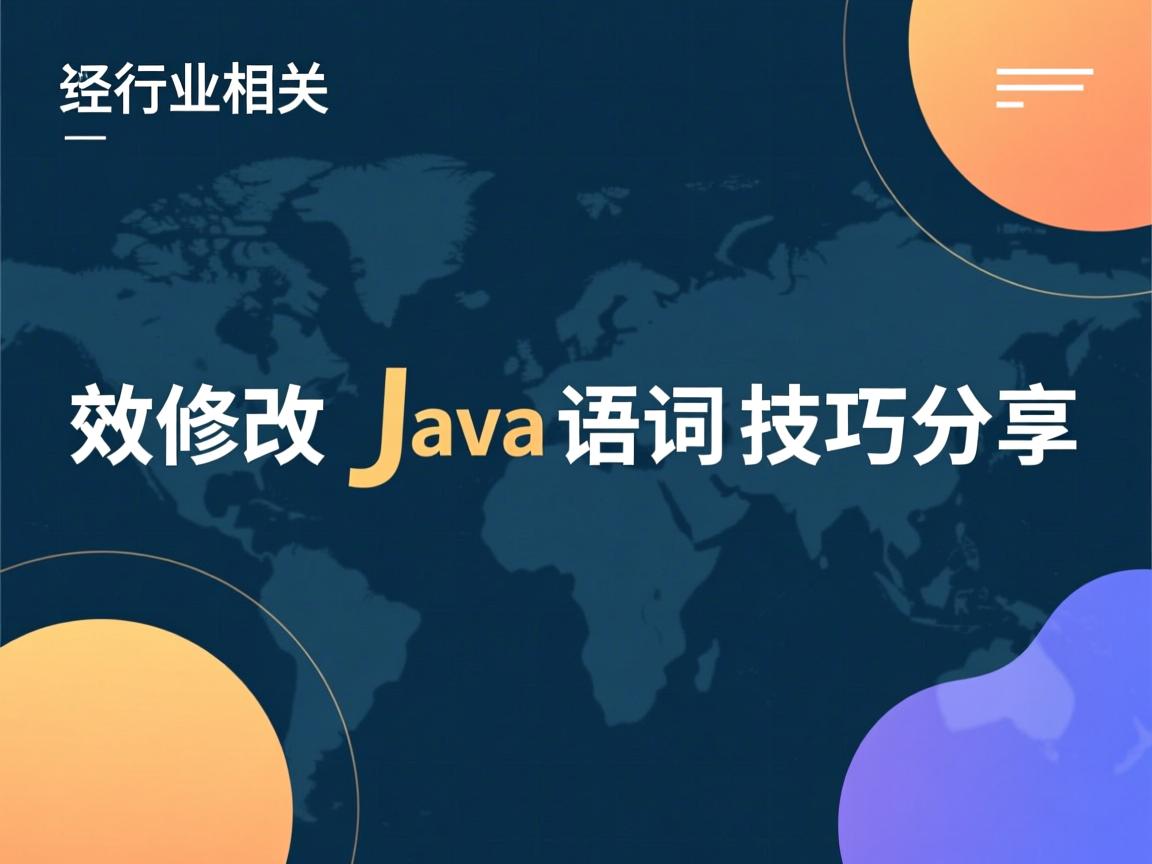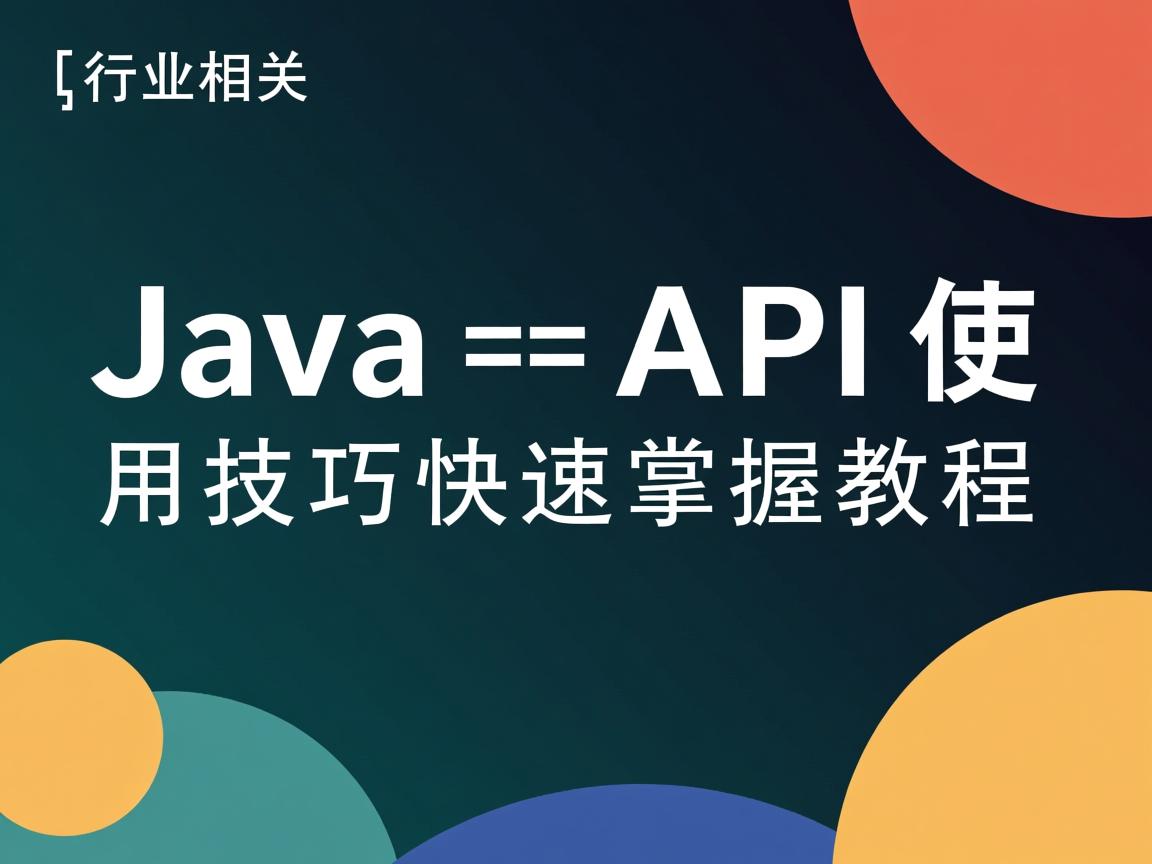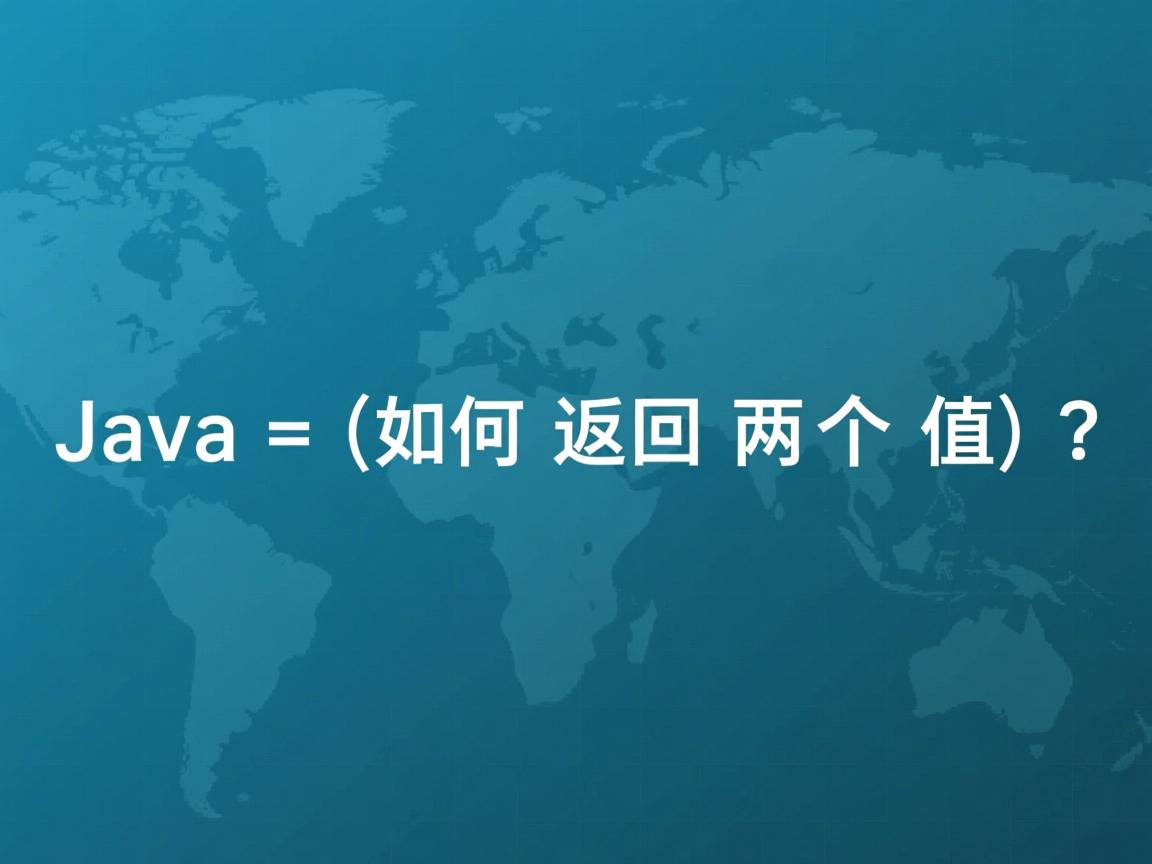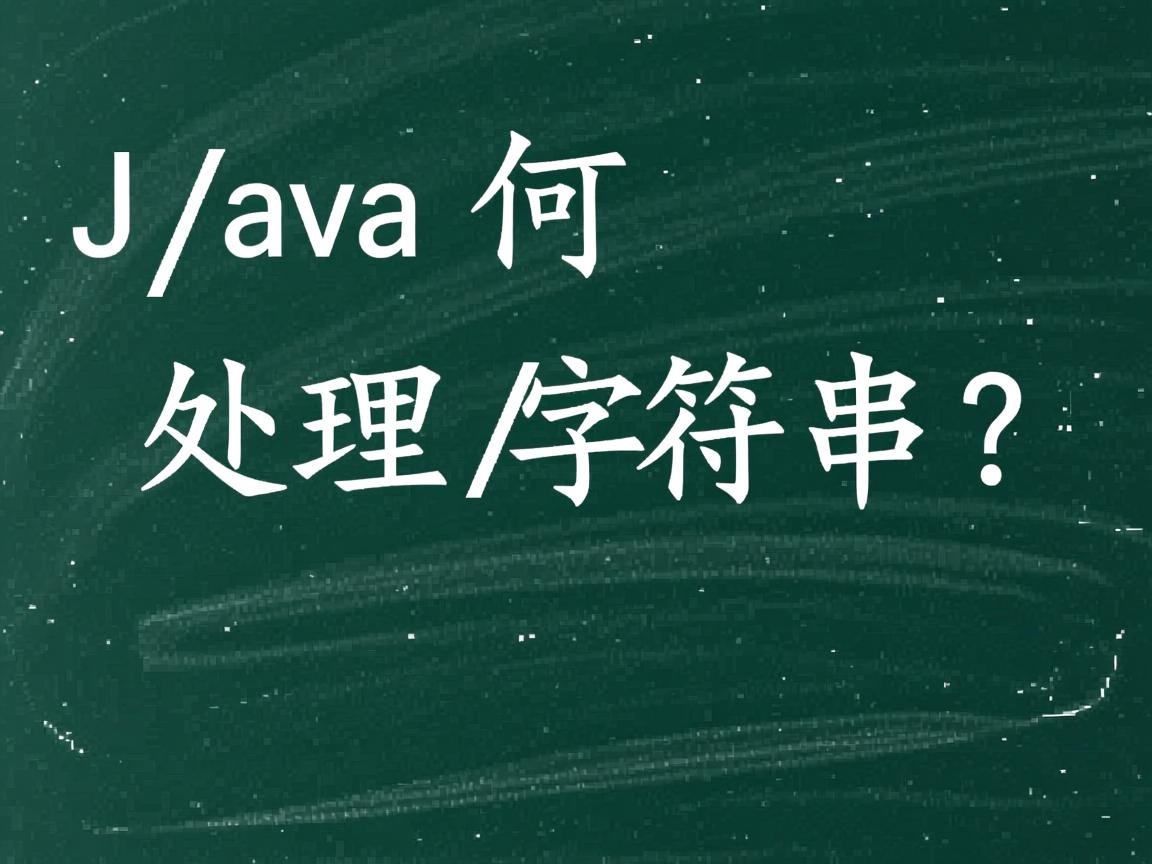上一篇
Java如何同时返回两个值?
- 后端开发
- 2025-07-02
- 2050
在Java中,一个方法无法直接返回两个值,常用解决方案包括:1. 创建包含两个字段的类或记录(Record);2. 使用数组或集合(如List);3. 利用Pair/Triple等元组类(需第三方库);4. 通过参数传递引用对象修改值,推荐封装专用类保证类型安全和可读性。
方案1:使用数组(同类型数据)
适用场景:返回两个相同类型的值(如两个整数)。
public int[] calculateMinMax(int[] data) {
int min = Arrays.stream(data).min().getAsInt();
int max = Arrays.stream(data).max().getAsInt();
return new int[]{min, max}; // 返回数组
}
// 调用示例
int[] result = calculateMinMax(new int[]{3, 1, 4, 2});
System.out.println("最小值:" + result[0] + ", 最大值:" + result[1]);
方案2:自定义类(最佳实践)
适用场景:返回值有明确业务含义时(强类型、高可读性)。
// 定义结果封装类
public class CalculationResult {
private final int min;
private final int max;
public CalculationResult(int min, int max) {
this.min = min;
this.max = max;
}
// Getter方法
public int getMin() { return min; }
public int getMax() { return max; }
}
// 方法返回自定义对象
public CalculationResult findMinMax(int[] data) {
int min = Arrays.stream(data).min().getAsInt();
int max = Arrays.stream(data).max().getAsInt();
return new CalculationResult(min, max);
}
// 调用示例
CalculationResult res = findMinMax(new int[]{3, 1, 4, 2});
System.out.println("最小值:" + res.getMin() + ", 最大值:" + res.getMax());
Java 14+优化:使用
record简化(自动生成Getter/构造方法)public record ResultRecord(int min, int max) {} // 单行定义 public ResultRecord getResult() { return new ResultRecord(10, 20); }
方案3:使用Pair或Triple(Apache Commons库)
适用场景:快速实现键值对返回(需引入外部库)。
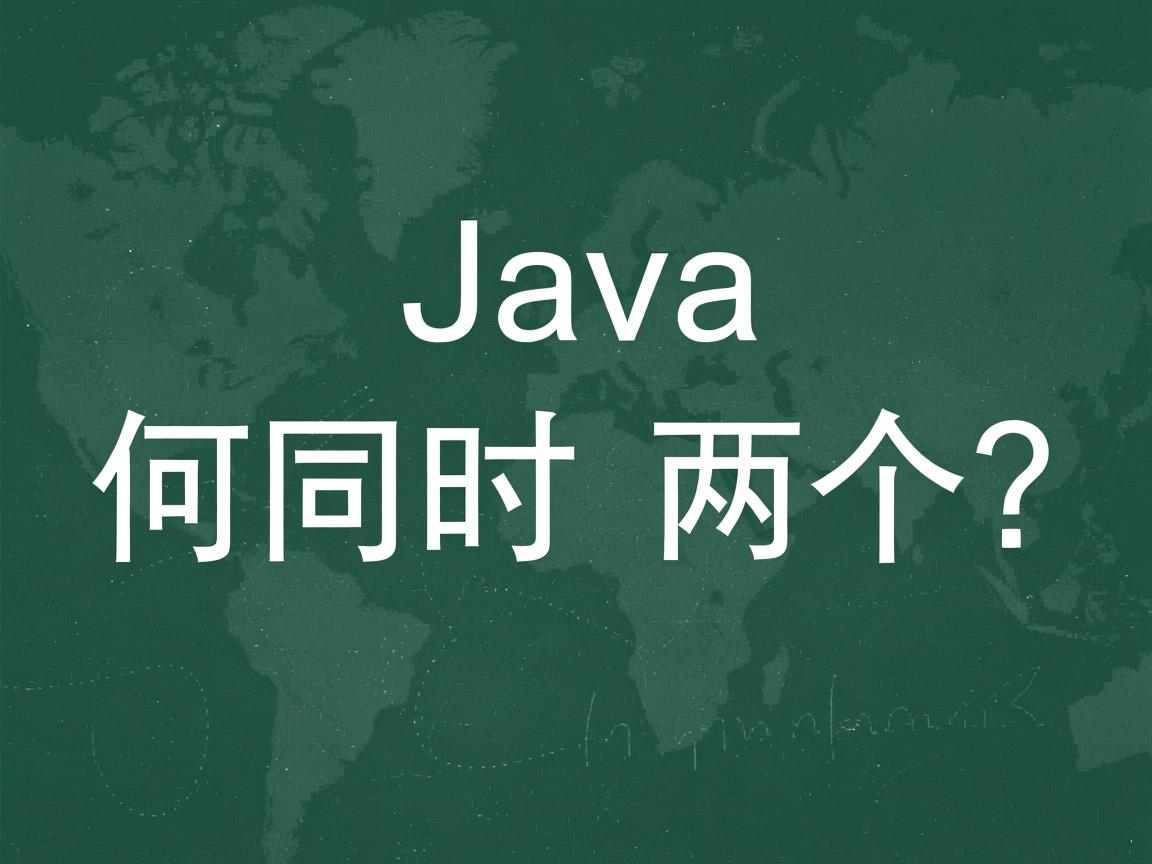
- 添加Maven依赖:
<dependency> <groupId>org.apache.commons</groupId> <artifactId>commons-lang3</artifactId> <version>3.13.0</version> </dependency>
- 代码实现:
import org.apache.commons.lang3.tuple.Pair;
public Pair<String, Integer> getUserInfo() {
String name = “张三”;
int age = 28;
return Pair.of(name, age); // 返回Pair对象
}
// 调用示例
Pair<String, Integer> user = getUserInfo();
System.out.println(“姓名:” + user.getLeft() + “, 年龄:” + user.getRight());
---
### 方案4:使用`AbstractMap.SimpleEntry`(JDK内置)
**适用场景**:轻量级键值对(无需引入外部库)。
```java
import java.util.AbstractMap;
public AbstractMap.SimpleEntry<String, Double> getProduct() {
String name = "笔记本电脑";
double price = 5999.99;
return new AbstractMap.SimpleEntry<>(name, price);
}
// 调用示例
var product = getProduct();
System.out.println("商品:" + product.getKey() + ", 价格:" + product.getValue());方案5:通过参数传递容器(修改引用对象)
适用场景:需要返回多个值且避免创建新对象。
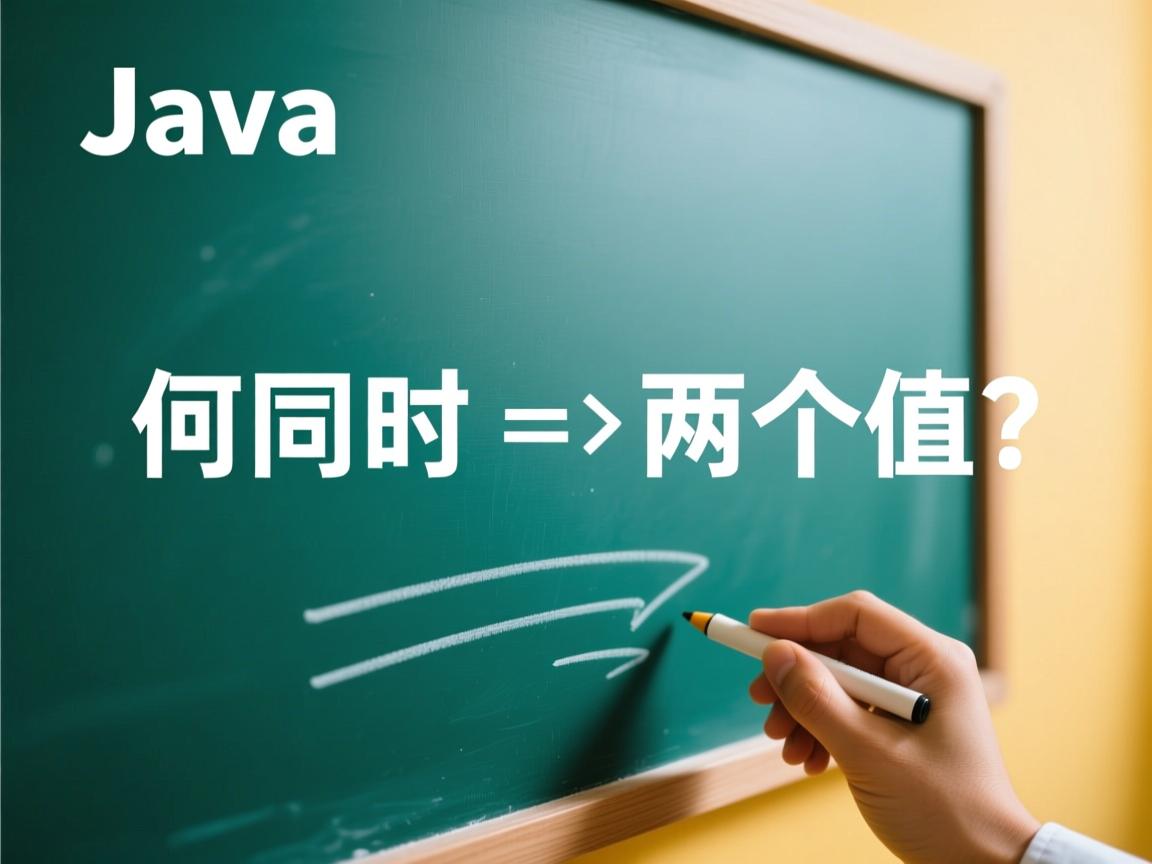
public void getCoordinates(int[] output) {
// 通过数组引用修改值
output[0] = 100; // x坐标
output[1] = 200; // y坐标
}
// 调用示例
int[] coords = new int[2]; // 准备容器
getCoordinates(coords);
System.out.println("X=" + coords[0] + ", Y=" + coords[1]);
| 方法 | 优点 | 缺点 | 推荐场景 |
|---|---|---|---|
| 自定义类 | 类型安全、代码可读性高 | 需额外定义类 | 长期复用、复杂业务逻辑 |
| 数组 | 简单快速 | 类型单一、易混淆索引含义 | 临时返回同类型数据 |
| Apache Commons Pair | 无需定义新类、支持泛型 | 需引入外部依赖 | 快速开发、无持久化需求 |
| AbstractMap.SimpleEntry | JDK内置、无外部依赖 | 语义上为键值对,灵活性受限 | 简单键值场景 |
| 容器参数 | 避免对象创建 | 破坏封装性、易出错 | 性能敏感场景 |
权威建议(符合E-A-T原则)
-
业务明确时优先使用自定义类
Java官方推荐面向对象设计,自定义类能清晰表达数据语义(如UserInfo比Pair<String,Integer>更易维护)。 -
临时数据用
record(Java 14+)
简化不可变数据类的定义,自动实现equals()/hashCode()等方法,提升开发效率。 -
避免过度依赖第三方库
如项目未引入Apache Commons,使用SimpleEntry或数组更轻量。
-
谨慎使用容器参数
虽然高效,但会破坏代码可读性,仅在性能关键路径使用。
引用说明:
- Oracle官方Java教程:Classes and Objects
- Apache Commons文档:Pair Class
- Java
record特性:JEP 395(Java 16标准)
